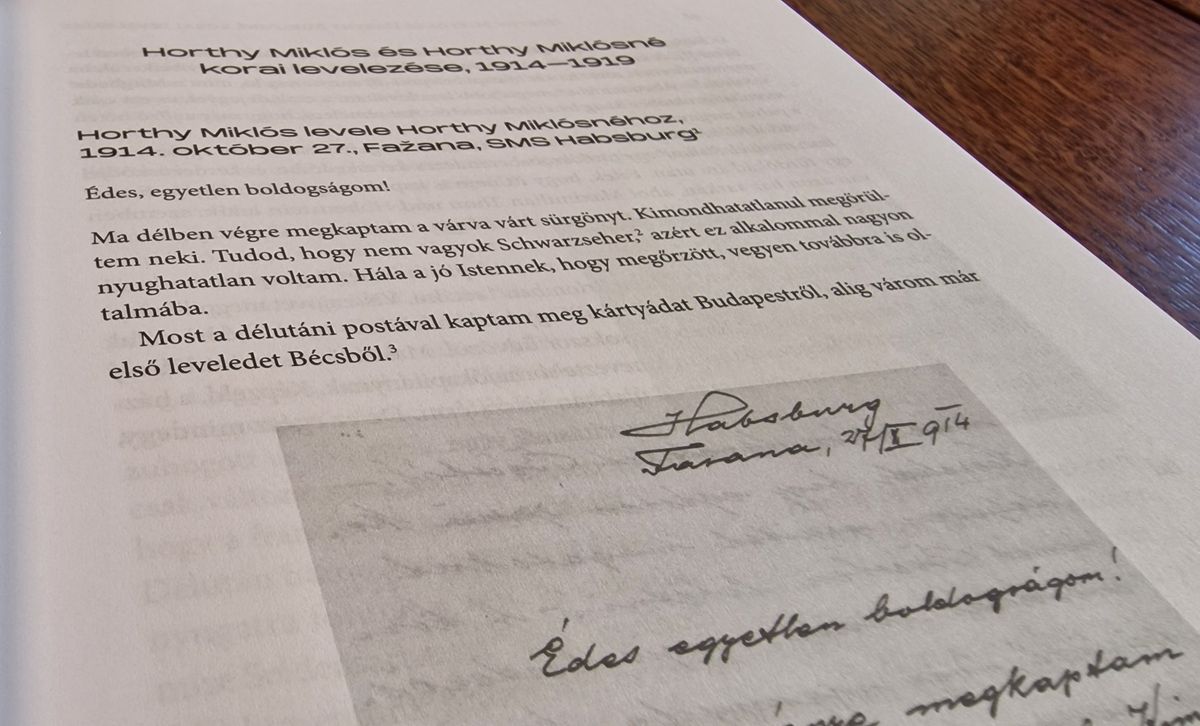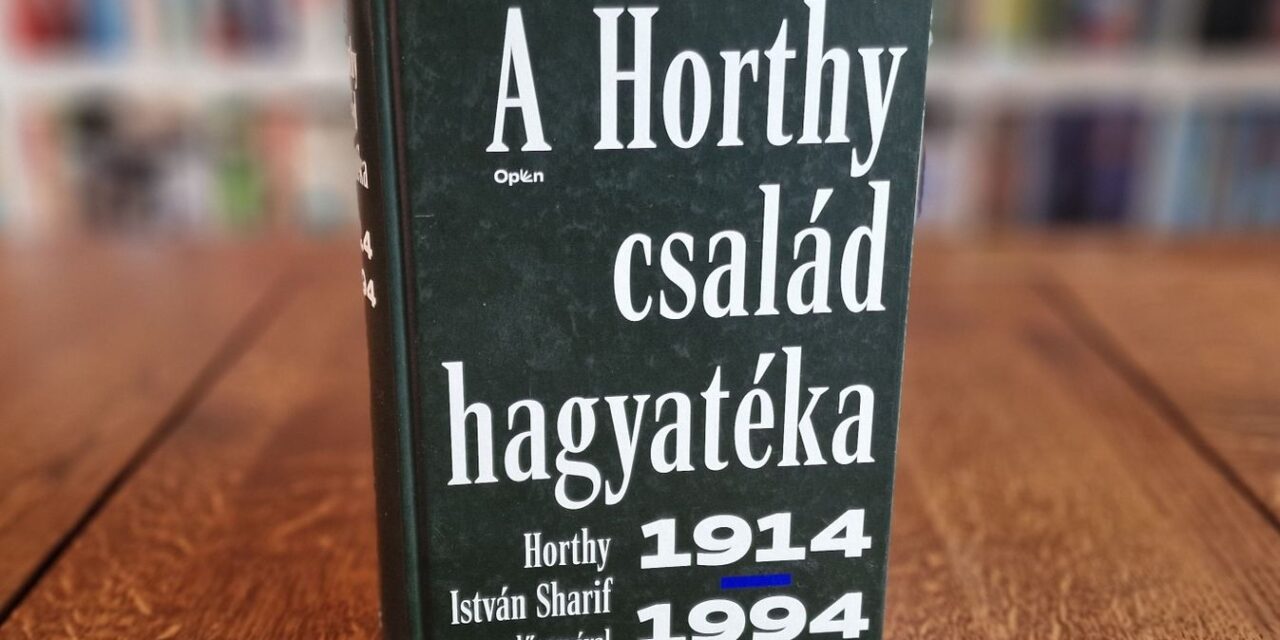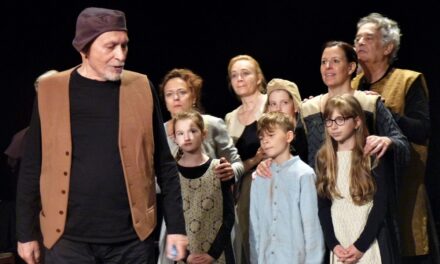The volume published on the legacy of the Horthy family gives a glimpse into the life of the naval officer and politician, as well as his family correspondence.
Miklós Horthy has been examined in many ways and in many different light, and the presentation of his figure cannot be uniform in many aspects. However, its importance in Hungarian history is indisputable, compared to many other elements, on which an intelligent exchange of ideas can and should be conducted. The good news is that the great joy was not in vain when, in 2023, it became public that a mass of documents that had never been published before became part of the world heritage, and the volume published at Open Books, or The Legacy of the Horthy Family , is not another debate initiative, not another divisive treatise, but
rather an impartial and documentation-like presentation of how the Horthy family corresponded
Between 1914 and 1994, covering almost an entire century. It's not an easy bestseller, I have to prepare everyone for that now, and it already says a lot about the nearly 1,050-page volume that only the notes fill about 300 pages.
A legacy of documents
This story has three great heroes. One of them is Mrs. István Horthy, or the widow of István Horthy, the deputy governor who died young, who kept the various correspondences with great precision for decades and rearranged them many times according to different systems. The other is István Sharif Horthy, who brings up the wealth of information that awaits the reader in the sea of letters with his personal memories. This is how we can learn more about his nanny, Ila, and his father, the talkative István Horthy, and his relationship with him, as well as how Miklós Horthy was a great grandfather,
with whom he had perhaps a closer relationship as a child than with anyone else in the family.
Finally, there is Andrea Bern, who gave up her life in Hungary at Sharif's invitation, and then started sorting and processing the many letters in England so that the book could be completed. The book, with the help of which those interested in the Horthy family can see much better into the everyday life of the family members, thereby making the historical figures even more human.

Source: Mandarin
In the pages of the Horthy family's legacy, the correspondence of the family that experienced many moves, traveling from Kenderes to the Gellért Hotel to the Buda Castle and then through Bavaria to Portugal, was divided into several segments by István Horthy's widow, Ilona Edelsheim-Gyulai. The originally digitized database contains 7,667 documents, which, in addition to the documents of Ilona Horthy, include the documents of the Horthy family, the Edelsheim-Gyulai family, and the families of friends. The volume presents many of these materials, which starts with the correspondence between Miklós Horthy and Miklós Horthy between 1914-1919.
From Happiness to Montgomery
The most exciting part of the book (at least for me) is the beginning, when the authors summarize how the entire documentation was prepared, what childhood was like as Miklós Horthy's grandson, and the first correspondence from the 1910s, when he was stationed in Póla and then Cattaro Miklós Horthy wrote to his wife every day, or even several times a day, reporting on his own thoughts and everyday life, as well as responding to the events mentioned in Miklós Horthy's writings.
This is a human-centered, essentially private correspondence,
in which there is no unpleasant element, so we can find out what the married couple was like in everyday life. Everything from each other's nicknames to leisure activities comes up, and it's a very colorful and exciting start to the hefty book, which of course delves more and more into wartime everyday life and politics as the eras and characters change.
Let's stick to the harsh reality
No matter how romantic and human the correspondence begins, on the one hand, the large number of notes is not accidental, on the other hand, over time, the conversations go in a much drier direction and, for many, more boring. For example, I would have very much liked to read more about Miklós Horthy's thoughts and opinions during the Second World War, which otherwise for understandable reasons does not appear in the family's correspondence, while
Ilona Edelsheim-Gyulai's five-year diary also contains relevant details only in headings,
and the next more important segment already focuses on the emigration period, on the correspondence with Miklós Kallay. But returning to the notes - the text generally contains such language, as well as a lot of information that is natural to the correspondents, but already hazy to the reader, that you have to constantly turn the pages between the current chapter and the relevant notes, which also makes reading a little difficult.

Source: Mandarin
Therefore, The Legacy of the Horthy Family is not exactly an easy read, and even the average and more superficial reader can easily break the knife. On the other hand, the target audience, i.e. those who want to learn about history and therefore easily devour even the more difficult readings and documentation, as well as those who would like to get to know the Horthy family better, are
you can find lots of interesting tidbits and details in the 1,000-page hardcover volume, free of any fluff.
And I think that there is nothing wrong with that, because that is exactly what a book of this kind should be about. At the beginning, I was a little afraid that Shariff, who has converted to the Muslim faith, is the background of the book, because this change of heart is reason enough for me to stay at least a little, but I feel that those who owe this volume have all done a great job.
Featured image: Open Books / The legacy of the Horthy family












